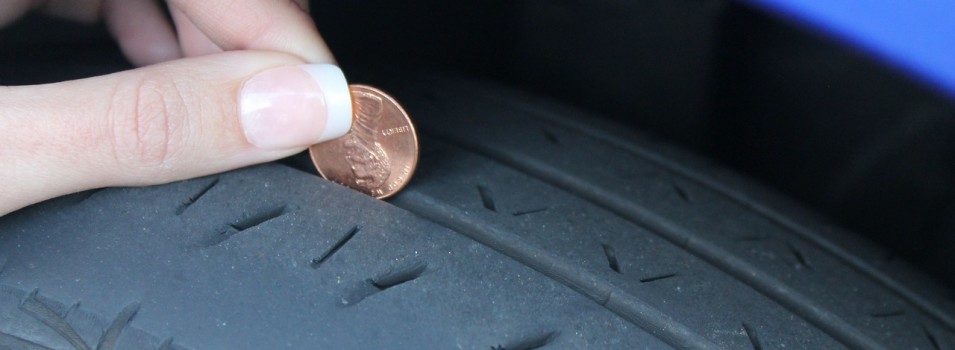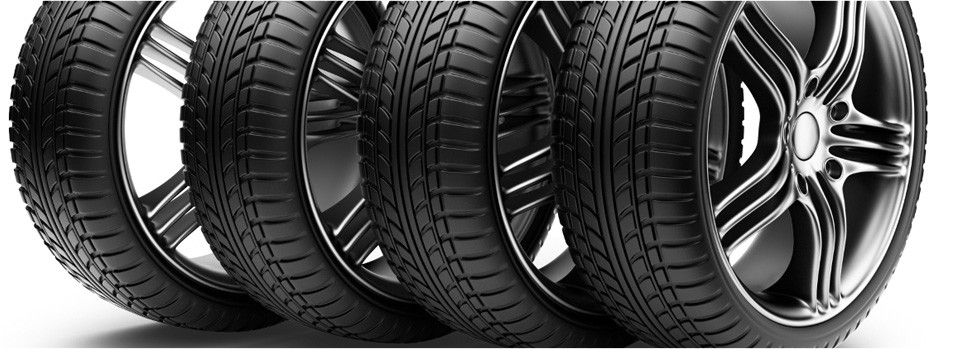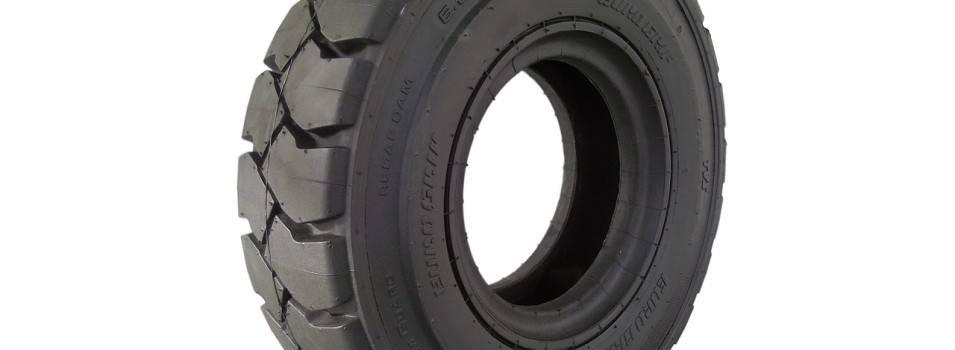Monthly Archives for December 2015

What Your Customers Need To Know: Percentage of Tire Tread Depth
No matter what time of the year it is, there’s always the possibility of inclement weather. If you get behind the wheel of a vehicle any time during rain or snow, you will be faced with driving hazards.
Depending on your driving speed and the road conditions, stopping on wet roads can take up to four times the normal force required to come to a halt. And if your tires are worn… you risk the chance of hydroplaning or skimming over the surface of the road with little or no grip.
Sadly, there are many people using the road while driving on worn tires.
You don’t want to join that vast majority of drivers who truly do not understand the dangers of driving on low tread tires.
Distressed tires, particularly bald ones can be fatal on wet roads, where the grooves are not deep enough to channel water out from beneath the treads.
The end-result is hydroplaning, where the tread wears and forces the tire to skim the water’s surface and the vehicle reacts to the steering wheel.
Snow grip and wet weather braking add additional wear bare tires.
Tread Depth
Tread depth is a perpendicular measurement between the very top of the tread rubber to the base of the deepest grooves of the tire.
In the US, tread depth is quantified in 32nds of an inch. You can calculate your tire’s tread depth by using a depth gauge.
Typical new tires usually begin with 10/32″ to 11/32″ of first tread depth.
Winter/snow tires and light truck tires usually are deeper. For light truck tires, that depth depends on the tire’s tread kind, varying from Highway Rib, Highway All-Season, Off-Road Maximum Traction or Off Road All Terrain.
Tires are lawfully “worn out” in the majority of States when they reach 2/32″ of remaining tread depth. By way of example, a typical tire that begins with 10/32″ of original tread depth has only 8/32″ of usable tread depth.
Manufacturing companies have set a number of horizontal bars at the bottom of the grooves to make bald tires easier for owners to see.
The bars become flush when the depth of the groove gets to 2/32 of an inch.
Since tire tread provides grip to prevent a vehicle from slipping and skidding, a tire is bad and ought to be replaced when the tread is worn down to 1/16th of an inch.
Not only is it incredibly important for your driving safety to make sure that your tires have good treads, but it is also essential to be sure your tires are correctly inflated.
If all of this seems like too much to handle, then may want to consider getting a tire inventory management to assist you in checking up on your tires. It cannot be stressed enough. If you drive on tires that are bald or significantly under-inflated, you’re risking an injury to yourself, your passengers, and other motorists on the road.

What Your Customers Need To Know: Tire Types
How well do you know your tires? Are you able to teach your customers about the different types of tires out there, and how important it is to choose the right ones for their vehicles?
In this article, we are going to explain the different types of tires and the functionalities for each of them. Should a potential customer ask you to tell the difference between each tire, you’ll not only be able to give him a well-informed answer but, you can show him what the best choices would be for his particular vehicle.
Shall we get started?
Despite improvements in longer-lasting tires, tread life will vary depending on the type of tire, car, driving aggressiveness, as well as road and weather conditions.
In most cases, you’d have to change your tires more or several times throughout the life of an average vehicle. As the familiar saying of that old adage, nothing lasts forever!
Responsible driving and appropriate care can optimize the mpg in your tires. Tire tracking software can usually tell when the tires need replacing, well ahead of the time of the mandated treadwear indicators.
Tire Types
In regards to changing your tires, it is important to learn about your options and to understand what’s presently in your car or truck. Usually, you will need replacements that are not only similar but also fits the size as well as speed rating. From that point, you may use a tire inventory system to seek out areas that are more important to you, including handling, braking, ride comfort, and sound.
All-Season Car Tires
All-season tires come in different sizes and fits everything from small cars to light-duty SUVs and pick-ups. They’re for motorists who need year round grip, long tread wear, and of course, a comfortable ride. Nevertheless, all-season tires generally lack traction and the exact handling of performance tires.
Performance All-Season Car Tires
These tires supply year-round traction tuned for enthusiastic driving. They have a speed rating that is higher than the standard all-season tires, and they usually provide better handling and braking than all-seasons as well.
Ultra-High Performance Tires
All summer and season ultra-high performance tires are usually fitted to sporty vehicles or upscale sedans. All season UHP tires are made to supply great handling and responsive steering in dry and wet states, but both the ride comfort, as well as the tread wear are typical compromises. UHP tires aren’t meant for cold weather and will not traction in icy or snow-covered conditions.
All-Season Truck Tires
All-season truck tires are made for the heavy loads pick-up or an SUV. All these are well-rounded tires made to perform well in varying conditions.
All Terrain Truck Tires
Engineered for heavy-duty use, all terrain truck tires are appropriate for paved roads. The broken tread is made to provide added grip on white and unpaved roads.
Winter/Snow Tires
Winter/snow tires offer outstanding traction corner in a cold, inclement weather. However, they generally have more rapid treadwear than all-season tires as the tread is made specifically to bite into ice and snow, and the rubber is invented to remain pliable at freezing temperatures. Additionally, winter/snow tires usually cease longer than all-season tires on roads that are cleared.
To help your customers make the best decision, using a tire inventory software can be of tremendous help. Be sure to check out our tire solution to see how beneficial it will be to you only if you implement the software today.

How To Tap Into The Used Tire Market
More customers are opting for ‘gently used’ tires than ever before. People are looking for a way to save money as well as to give back to the environment. When it comes to vehicle ownership, one of the best ways to do so is to use recycled tires. Of course, if you already have a large used tire inventory, you may simply be wondering how to tap into the market fully.
One of the best ways to make the most of your in-house inventory is to invest in some form of management software system. Many businesses are now finding that it takes more than a clipboard and a few staff members to keep track of a tire inventory. An easy replacement for these outdated organization tactics is a tire inventory software.
How Tire Management Software Can Make A Difference
Taking control of your inventory is key to ensuring you can effectively fill orders and keep customers coming back to your business. After all, if customers call you looking for a certain tire size and you’re not 100% sure whether or not you have it, you’re going to look like an amateur, to put it lightly.
Utilizing a tire inventory software can make the difference between building a successful tire business and failing right out the gate. Modern technology has transformed the market. Nowadays, when you set up a business, you are almost required to have software ready to go. If you invest in the right software, you’ll experience far greater profits in the long run.
4 Tips To Tap Into the Tire Market
Tip #1. Evaluate your competition.
The more competition you have in your area, the harder it will be to tap into the market. Do your research and define who your competition is, whether or not there are several well-established tire shops already up and running, and then go from there.
Tip #2. Advertise that you accept donations.
Selling used tires can be a tricky business. You may find it difficult to keep your inventory stocked. To help yourself out, advertise that you accept donations for your inventory. You’d be surprised by how many acceptable tires you’ll have donated.
Tip #3. Set competitive pricing.
Obviously, selling used tires sets you up for some serious competition. Not only do you have to compete with brick and mortar stores, you also have to compete with online retailers. Pricing is, therefore, critical. You don’t want to set your prices too low that you undercut yourself, but you also don’t want to set them too high that no one will purchase them. Once again, research comes into play. Analyze the market to determine what pricing will work.
Tip #4. Invest in the right tools.
Another important tip is to use the right tools. We already mentioned the importance of a tire inventory software, but we want to reiterate how crucial it is to invest in these tools. Tire inventory management is made easier with the right tools. Your used tire inventory will greatly benefit when you place importance on organization.
It quite literally pays to make a business plan centered on technology. If you want to make the most of your business, consider investing in the right software and discover how successfully your business can be.

Efficient Tire Management For Tire Shops
We know that your tire inventory is one of the most essential parts of your company. Truth be told, most tire shops, auto recyclers, and car dealers still use traditional ways to manage their tire inventory.
Some tire shops may already be comfortable in writing tire inventory in a sheet of paper or encoding it in an excel file. The problem is that this isn’t the most efficient way to track your tire inventory!
The Traditional Tire Inventory Management is Inefficient
“But it’s been working for us for years. Why change our system?”
There’s nothing really wrong with using a system that works, but efficiency is something that’s hard to get. Even with today’s technology, many tire shops fail to realize that their traditional tire inventory management is becoming more and more inefficient.
Below are the several disadvantages of using the traditional method of managing your tire inventory:
1. Prone to Mistakes
Yes, employees of tire shops may make mistakes when updating tire inventory in a sheet of paper or an Excel file.
2. Inefficiency
Constantly updating your tire inventory, especially when you have several stores, is a tedious and time-consuming task.
3. Higher Labor Expenses
Since people take more time updating your tire inventory across all your stores, you need to higher more employees to fill in your other business needs – increasing labor expenses.
4. Miscommunication
With the traditional method, miscommunication happens. When this happens, you may lose customers and ruin your company’s reputation. You don’t want this to happen!
A Better Way for Tire Shops to Manage their Tire Inventory
Using the power of technology and the speed of the internet, tire shops can now have a cloud-based tire inventory that’s easily accessible anywhere. Perfect for tire shops with multiple stores and those that struggle with the traditional tire inventory management.
Lucky for you, Tire Inventory Solutions can help you manage your tire inventory effortlessly and efficiently! We have developed a software that can cater all the needs of tire shops and it’s working great.
With Tire Inventory Solutions, you can enjoy the following benefits:
• No more input mistakes
• No more miscommunication
• Accessible anywhere
• Increased sales through online exposure
• Reduced labor expenses
• Increased efficiency
• Real time updates
• Hassle-free advertising
• URL link to tire inventory
• Post on Facebook, Craigslist, Ebay, findthetires.com, and more
• iOS and Mobile app for your smartphone or tablet
• No sign up fees
• 30-day trial
• No need to download any software
What Are You Waiting For?
Tire Inventory Solutions is what your company needs! Everything’s all set up, and tire stores just need to upload their tire inventory list to start using the system. Business owners can also advertise their tires online – hassle-free!
Lower your expenses and increase your revenue – we’d love to see you succeed! Tire Inventory Solutions is offering a 30-day free trial; there’s really nothing to lose.
Try our efficient tire management software today! You won’t regret a thing!
